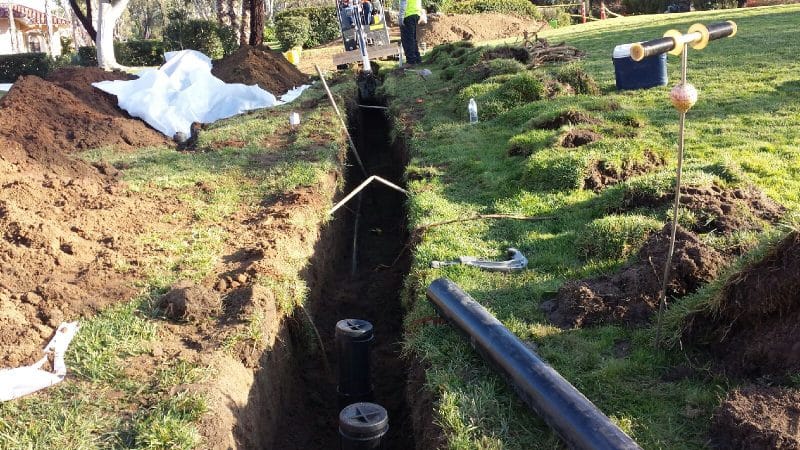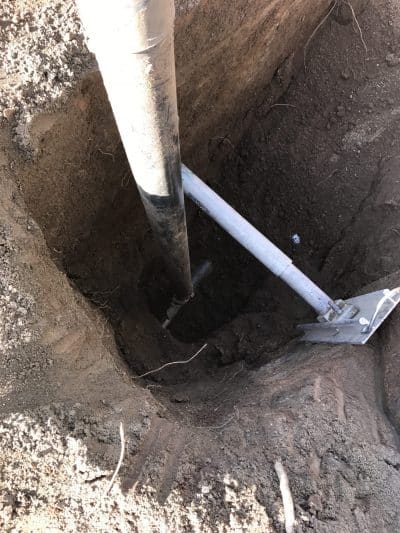Sewer line replacement is a dreaded part of homeownership. From the smell to the cost to the invasive procedures, it is never a fun time.
Unfortunately, at some point in a home’s lifetime, sewer line replacement will be a necessity. Knowing what to expect when it happens can help ease a lot of the stress and anxiety around a sewer line replacement.
Drain Masters Plumbing provides professional and affordable sewer line replacement services to all of San Diego County. Schedule a free sewer line inspection today.
Do you need sewer line replacement? We’ve put together a quick-reference guide on what to expect when you’re expecting a sewer line replacement.
When Is It Time For A Sewer Line Replacement?
Most sewer lines are designed to last approximately 75 years. This timeframe can change depending on what materials were used in the construction and the environmental conditions you live in.
If you start noticing that all of the drains in your house are slow or backing up, it might be time to start shopping around for a full sewer line replacement or repair. If it’s just the occasional toilet or sink, it is probably an isolated issue.
Bad smells, pooling water in the yards or areas of the home, increased pests, and low water pressure are also indicative of a problem with your sewer line. Always call a plumber for an inspection if you begin to notice issues before it’s too late.
Simply cleaning the pipes with a snake or with a drain cleaner will not do the trick if you have a collapsed or compromised pipe in your sewer line. This is when you want to call in the professionals.
What Are The Steps Of A Sewer Line Replacement?
There are several options available to you when looking into a sewer replacement. Depending on the condition and age of the line, different solutions may be best.
1. Evaluation by a Professional Plumber
Once you have noticed a potential issue with your sewer line, you’ll want to call in a plumber to evaluate it. They can inspect your home’s exterior, foundation, and even the pipes themselves to let you know the best course of action.
2. First Option: Tunneling
The first option is a complete overhaul and replacement of your sewer line. This usually involves tunneling, which is the process of excavating the lines underneath your home and doing a full replacement.
Tunneling is extremely expensive and also very hazardous to your home and plumbing workers due to collapsing soil and the potential for foundation shifts or cracks. It should generally be avoided except in the most extreme cases.
3. Second Option: Spot Replacement
A slightly less-invasive method is to replace sections of the pipe as needed. Generally, the plumber will run a camera through your sewer lines to determine areas that need replacement.
Those areas can then be excavated through the floor. While not great for your flooring, it is still far less invasive and safer than tunneling.
4. Third Option: Trenchless Pipe
Finally, there is pipelining, or trenchless pipe. Pipelining is a no-dig, no-demolition solution. Your plumber will feed new PVC tubing throughout your existing sewer line. This tubing acts as a liner within the old pipes.
The space between the old pipes and the liner is filled with a waterproof epoxy sealant. Pipelining has been shown to match or even improve the original flow capacity, despite a technically smaller pipe.
5. Permits
Depending on the method you choose, you may have to apply for a permit to conduct repairs on your sewer line. Your plumber should know whether or not a permit will be necessary.
Which Option Is Best?
Always consult with a plumbing professional to determine the best course of action for your home. Luckily, after a sewer replacement, your home’s sewer system will be good to go for another 50+ years!
Feel free to contact us if you suspect you need a sewer line replacement. If you are having a plumbing emergency, try our 24-hour emergency service line at 619-346-4212




